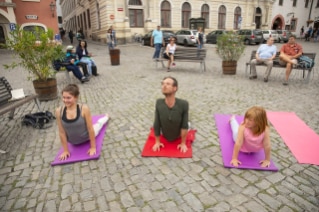The editorial by Mario Cucinella is part of “Arcipelago Italia” is part a supplement dedicated to the Italian Pavilion, attached to Domus 1025, the June 2018 issue.
“Arcipelago Italia” is the title of the exhibition featured at the Italian pavilion during the 2018 Venice Architecture Biennale. Its focus is away from Italy’s big cities to places where since the remotest past, communities have expressed themselves in a different relation between the built environment and the physical surroundings. In space and time, these parts are far from metropolitan areas, but they possess inestimable cultural heritage whose particularities make Italy an exception to the rest of urbanised Europe, allowing us to describe our country as “an urban space in the Mediterranean”, to use the words of the French historian Fernand Braudel. The facts that led us to consider their rehabilitation a strategic theme for the entire country are the following: the heterogeneous cultural identity of these places, reflected as it is in the diversification of habitat; their vast territorial expanse; and their distance to elementary services.

 View gallery
View gallery
























































In recent years, architectural attention has been directed at big works in urban areas, leaving out over 4,000 towns that represent 60 per cent of Italy’s surface area and 25 per cent of its population. This means we are losing the type of expressive biodiversity that prefers proper size to grandiose gestures. In this light, we wish to give a voice to the rich and prolific world of empathic architecture that is expressed in small acts of improvement and dialogue, and that rises to the (obviously never entirely resolved) challenge of uniting history, contemporary times and landscape. Only this unison can lead the work of architects back to its cornerstone of social responsibility. Our survey began with an online invitation allowing us to find concrete examples that show the role contemporary architecture can take on in settlements far from metropolitan areas by contributing to the three-way connection between new requirements, historical stratification and landscape. We received over 500 responses, projects through which it was possible to travel to our peninsula’s least-known parts – forests, hamlets and small towns. A diverse and multifarious picture came to our attention.

In a context distinguished by post-seismic urgencies and the need to rebuild, very few high-quality contemporary structures are found. What we do see in this archipelago is the courage and creativity of professionals who go about the daily business of working on projects of small dimensions, sewing and mending with simple and empathic techniques of enormous value. Theirs is an attempt to strike up a dialogue with the context and the local needs in order to rehabilitate the area. As time has demonstrated, the disassociation of architecture from people and their needs is a damaging operation. On one hand, it has created an idea of modernity that is increasingly extraneous to the different cultures and communities. On the other, it has led to a lack of quality and beauty. These are obtained not just by building or rebuilding, but also by identifying the needs of the locality. Therefore, we have adopted a policy of listening in collaboration with the multidisciplinary team Ascolto Attivo, to understand where the broken link is that for centuries permitted us to interpret the community’s wishes and transform them into architecture.










